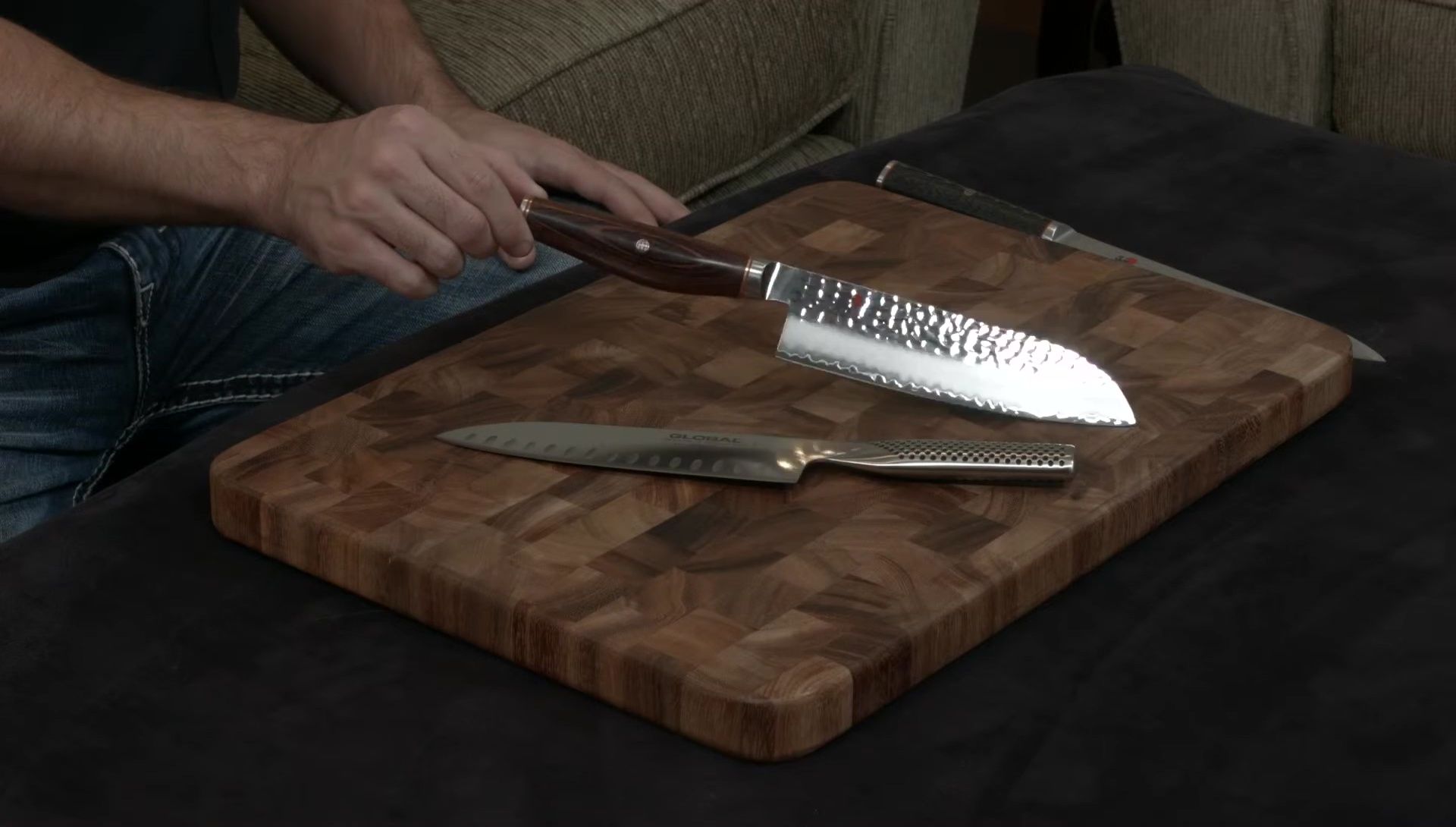Choosing the right Santoku knife can be a daunting task, especially with the plethora of options available. This comparison delves into the specifics of two popular contenders: the Miyabi Artisan and Mizu, and the Global Santoku. While both are designed for versatile kitchen use, their construction, materials, and overall feel differ significantly, impacting their performance and longevity. This detailed analysis explores these key differences to help you determine which knife best suits your needs and culinary style.We will examine the crucial aspects of each knife, including handle materials and construction, blade composition and sharpness, tang design, and the overall impact these features have on the user experience. By comparing the handcrafted elegance of the Miyabi line—with its high-end steel and meticulous detailing—against the more utilitarian, yet reliable, Global Santoku, we aim to provide you with a clear understanding of the advantages and disadvantages of each, facilitating an informed decision based on your priorities and budget.
Pros And Cons
- Nice knife
- Lacks attention to detail (90-degree angles, visible forging marks)
- Chrome ova 18 steel (relatively soft, ~56-58 hardness)
- 15-degree cutting angle
- Zero tang (handle is hollow, filled with sand, welded to the blade)
- Handmade (Artisan is 100% handmade, Global is automated)
- Rounded corners on the handle, no sharp edges
- Flush handle on both sides
- Attention to detail (carved logo, mosaic pin)
- SG2 powdered steel cutting core (very high-end, very hard, ~63 hardness)
- 9-degree cutting angle (sharpened by hand, three-step process)
- 50% thinner cutting edge than Global
- Additional layer of SG2 on each side of the blade
- Full tang
Read more: 10 Best Ceramic Sushi Knives: Ultimate Guide
Handle Comparison: Craftsmanship and Design
The Miyabi Artisan and Mizu knives boast strikingly different handles. The Artisan features a rosewood pakka wood handle, offering a classic and elegant feel. Its meticulously rounded corners and flush fit provide exceptional comfort and control during use. The Mizu, on the other hand, showcases a micarta handle with a captivating grain structure and red accents.

The handcrafted nature of the Miyabi knives is evident. Each corner is seamlessly rounded, and the handle perfectly integrates with the blade. The logo is elegantly carved, and a beautiful mosaic pin, comprising numerous tiny steel, bronze, and copper pieces, adds a luxurious touch. This level of detail contrasts sharply with the Global knife's more utilitarian approach.

The Global Santoku, while nicely designed, lacks the same level of hand-finishing. Its 90-degree angles and visible forging marks point to a more automated manufacturing process. This difference in construction impacts the overall feel and perceived quality of the knife.

Blade Material and Sharpness: Performance Differences
The core difference lies in the blade material and construction. The Global Santoku utilizes Cromova 18 steel, a softer steel with a hardness around 56-58 HRC. It features a 15-degree cutting angle.

In contrast, the Miyabi knives utilize SG2 powdered steel, a high-end material boasting exceptional hardness (around 63 HRC). This steel is crafted into a remarkably sharp 9-degree cutting angle. This hand-sharpened blade (three-step process) promises superior edge retention, requiring significantly less sharpening over its lifetime.

The Miyabi's blade is also significantly thinner at the cutting edge (approximately 50% thinner). This design contributes to the knife's exceptional sharpness and ease of use when finely chopping ingredients. The SG2 cladding on the sides contributes to both the aesthetics and durability of the blade.

Tang Construction: A Key Difference
Another crucial distinction is the tang construction. The Miyabi knives feature a full tang, extending the entire length of the handle, enhancing balance and durability. This full tang ensures stability and strength during demanding cutting tasks.

Conversely, the Global Santoku has a zero tang. The handle is hollow, filled with sand, and welded onto the blade. While this construction keeps the knife lightweight, it may compromise overall robustness and the feel of a solid knife.

The tang construction significantly impacts the knife's balance, feel, and overall performance, making it a key consideration when choosing between these knives.
Conclusion: Which Santoku Should You Choose?
The choice between the Miyabi and Global Santoku ultimately boils down to personal preference and priorities. The Miyabi knives excel in handcrafted quality, exceptional sharpness, and superior blade material. Their higher price reflects this premium craftsmanship.
The Global Santoku offers a more budget-friendly option with a comfortable design and good performance for its price point. However, it lacks the exceptional sharpness and detail of the Miyabi knives. Consider the balance of price and performance when making your decision.
For discerning cooks who prioritize ultimate sharpness and long-term edge retention, the Miyabi Mizu or Artisan is undoubtedly worth the investment. If budget is a major concern and you're looking for a reliable everyday knife, the Global Santoku remains a solid choice.
